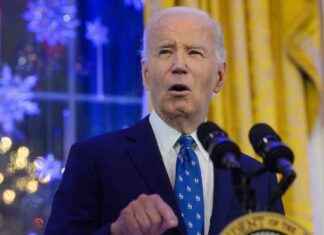NEW YORK — How much more can the “Trump Bump” lift the stock market?
U.S. stocks have screamed to records since Election Day because investors are expecting Donald Trump’s White House to cut taxes for business, make regulations easier for them and goose more growth out of the economy. But investors around the world are questioning whether the rally is exhausting itself.
The big jump for stocks has come at a time when some investors had already seen markets as overpriced. Plus, skeptics see cause for caution with a president who prides himself on unpredictability. That has some favoring bonds or stocks from other countries over the U.S. stock market.
“When we had the election, there was initially shock,” said Darrell Riley, a vice president at T. Rowe Price who helps set the strategy for how $240 billion in target-date retirement and other mutual funds are invested. “Investors were really shocked, and then we went into this period of euphoria, and now we’re in a state of confusion.”
Risks have grown large enough that the committee steering T. Rowe Price’s target-date retirement funds and other balanced funds sees stocks as slightly less attractive investments than bonds. It’s the first time that’s been the case since 2000, when the dot-com bubble popped.
The trend has been moving in that direction for years, because stock prices have risen faster than corporate earnings, which makes them look more expensive, said Riley. But it was only a few weeks ago that the committee made the decision to go “underweight” on stocks and Betper favor bonds more instead.
Besides the high price tags for stocks, another reason for the move was that the pace of change on business-friendly reforms in Washington will likely be slower than the market expects, Riley said.
“The Trump team can work on only one thing at a time, and they’re spread relatively thin,” he said. “They’re finding that accomplishing what they want to accomplish is far more complex than they probably imagined.”
There are also concerns that tax cuts will come in later than many expect.
Strategists at Goldman put the mood of the market this way: “We are approaching peak optimism.” They forecast the S&P 500 will hit a high in the next month or so but end the year lower than where it is now as investors push back expectations for the timing of the tax cuts.
In any case, how much influence does the occupant of the White House really have?
Not as much as many investors believe, according to Ben Inker, head of the asset allocation team at GMO that warned of bubbles in the stock market before the 2000 dot-com implosion and the 2008 financial crisis.
After all, stocks, for most investors such as pension funds, are meant to be long-term investments, to be held longer than a news cycle or even a four-year White House term.
GMO’s Inker continues to prefer stocks from developing economies over U.S. stocks because they look less expensive. “People are assuming bad things will happen in emerging markets,” he said. The U.S. stock market, meanwhile, is “priced as if only good things are going to happen.”
“Even if we have a global trade war, and it’s twice as bad for Korea as it is for the U.S., the reality is U.S. stocks are priced as if growth is going to be good, and the disappointment might well be greater in the U.S. even though the economic impact is worse in Korea,” Inker said.
Many investors see the risk of a global trade war as a remote one, but they’re not eliminating the possibility following Trump’s rhetoric on the campaign trail.
Restrictions on trade by the Trump administration could trigger other countries to retaliate and lead to lower profits for U.S. companies that depend on customers and suppliers around the world. About 44 percent of sales for the S&P 500 came from foreign countries in 2015.
“All the talk surrounding tariffs and trade barriers and walls, whether they’re physical or financial, these are distinctly not helpful or supportive of real economic growth,” said Rich Weiss, senior portfolio manager at American Century Investments.
Trump’s campaign for president and his first days in office have altered the dynamic with regards to free trade. He has promised to rewrite already-existing free-trade deals and has ditched the Trans-Pacific Partnership, a proposed pact between 12 countries that border the Pacific Ocean which represented around 40 percent of global economic output.
“Protection will lead to great prosperity and strength,” Trump said in his inaugural address.
History suggests not. Roberto Azevedo, director general of the World Trade Organization, the body that oversees trading rules, warned recently about the rising protectionist talk with reference to the 1930s, when governments raised tariffs and wiped out two-thirds of global trade in three years.
“You don’t want to see that now,” he said. “That would be a catastrophe of untold proportions.”
For now, the prevailing assumption in markets is that Trump will eventually be able to push through lower corporate tax cuts, ease regulations on business and approve some increased infrastructure spending. In the meantime, the economy continues to strengthen and corporate profits are swinging higher, which should offer support for stocks. That has investors feeling confident enough to plow more money into U.S. stocks.
Perhaps the only point of consensus across the market is that investors are preparing for a bumpier ride going forward.
“While we continue to think a Trump victory likely means higher U.S. growth in 2017 than we would have expected three or six months ago, we still think volatility will be a feature of the year,” said Jim Reid, a strategist at Deutsche Bank.
“It just seems that there are too many uncertainties, unknowns and major policy changes attached to a Trump presidency for it to be a smooth year.”
Our editors found this article on this site using Google and regenerated it for our readers.















